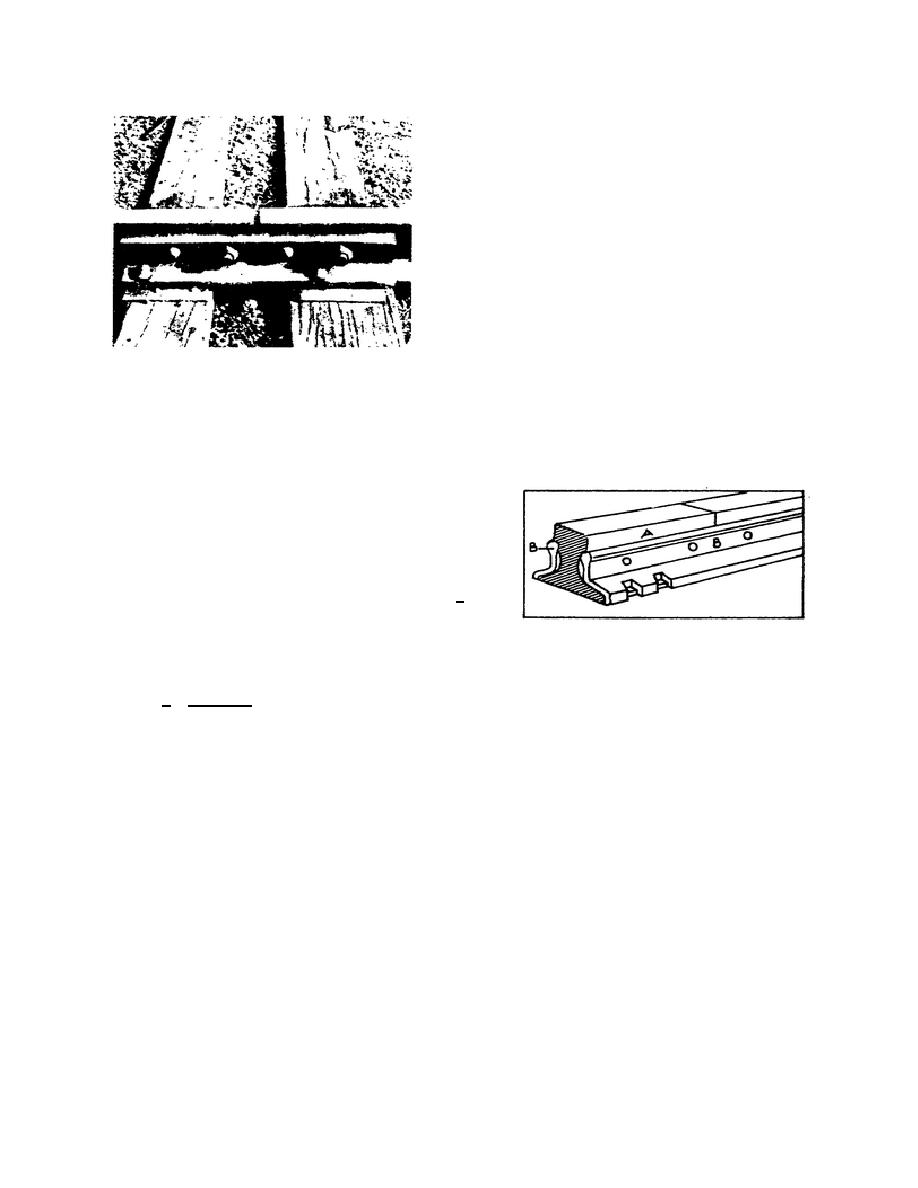
invariably weaker than the rest of the rail. When
good track surface is lost, it is usually at the joints.
All problems of track maintenance are
accentuated at the joints. When a train wheel
passes over a joint, a severe blow is delivered to the
end of the succeeding rail length, causing battered
rail ends--one of the more serious forms of wear to
which rails are subjected. Battered rail left in main
tracks causes rough riding, damage to equipment
and lading, and, eventually, pumping ties at joint
locations.
This section explains the design,
classification, installation, and maintenance of rail joints, and the need for compromise,
insulated, and bonded joints.
3.25. DESCRIPTION
Where two lengths of rail meet, they must be spliced. The splice is made with a rail joint
consisting of a pair of bars bolted one on each side of
the two rails to be joined, as the sketch shows. In the
sketch, A indicates the rail; B the bars. Each bar
extends across the space between the rails. The bars
are variously called joint, splice, or angle bars. In this
text, they are referred to as angle bars (par. 3.26a).
The subparagraphs following describe the bars and the bolts used to join them to the rail,
the method of joining the bars to the rail, and the methods of joint support.
a. The bars. Either four-or six-bolt bars are used; the length of the bar determines the
number. Four-bolt bars are generally 18 to 24 inches long; six-bolt ones, 36 to 40 inches. The
six-bolt bars are more advantageous economically than the four-bolt ones. They provide longer
bar and rail life and preserve track surface at the joint. The four-bolt bars are simpler to install,
less expensive in cost, and lighter, and require fewer bolts. For these reasons, they are more
often used on military railroads.
62



 Previous Page
Previous Page
